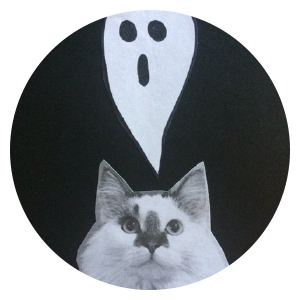
In this series, I will be “sharing my notes” on various paranormal research groups. Each post will usually include key facts, a brief introduction, notable cases, and an introduction to a notable member. Feel free to jot down notes in your commonplace book.
Founding Date: 1882
Location: London, England
Research Focus: all forms of paranormal cognition (examples: clairvoyance, telepathy); paranormal action (examples: poltergeist, teleportation); altered states of consciousness (examples: hypnotic trance, near-death experiences); physic sensitivity or mediumship; life after death
Research Methods and Tools: scientific research; randomized studies, psychology, empirical studies, conceptional studies, laboratory experiments
Introduction – The Beginning
The Society for Psychical Research (SPR) was founded in 1882 for the “purpose of investigating mesmeric, psychical and ‘spiritualist’ phenomena in a purely scientific spirit” (SPR). This came at a time when science was challenging religious worldviews and the spiritualist movement opened many to paranormal possibilities. Think seances and ectoplasm!
Before the official SPR, there was the “Sidgwick group,” which was an informal group of upper class individuals interested in researching Spiritualism’s claims. The key figures in the beginning were all Fellows at Trinity College at Cambridge: Henry Sidgwick, Frederic W.H. Myers, and Edmund Gurney. Henry also married Eleanor Balfour of the Balfour family, a prominent Scottish family (fancy, fancy). Eventually this group merged with others pursuing similar work, including other scientific thinkers and spiritualists, to form the SPR.
With a group full of prominent and educated people, it is no surprise they attracted people like Arthur Conan Doyle, William James, Sigmund Freud, Carl Jung, and more. By 1900, the group had published over 11,000 pages of research (Guiley) and, in 1885, they helped found the American Society for Psychical Research.
Ok, let’s get to the drama.
By 1887, many spiritualists had left the group. You see, when an organization’s research cannot prove life after death and is revealing many mediums are frauds, spiritualist members wonder what the heck they are doing there.
A very notorious exit was Arthur Conan Doyle. He wrote a letter of resignation after medium William Hope was called a fraud in the organization’s publication by member Theodore Besterman. While he thought Theodore Besterman was reaching, this published report was indicative of his larger issue with SPR research: ‘assertions of the opponents of Spiritualism are at once accepted on their face value without the slightest attempt at discriminate examination’ (Cambridge University Special Collections). Many members followed Doyle.
The organization, despite internal tension, still remains the leader of psychical research.
To read an in-depth history, I recommend visiting their About page.
Publications
- Proceedings of the Society for Psychical Research (began in 1882)
- Journal of the Society for Psychical Research (began in 1884),
- Paranormal Review (began in 1996; later replaced by Magazine of the Society for Psychical Research)
- Psi Encyclopedia (This is a fun online resource).
Notable Members
With such a long and rich history, it is no surprise the SPR has quite the roster.
- Henry Sidgwick (founding member, past president); utilitarian philosopher and economist
- Frederic W.H. Myers (founding member, past president); poet, classicist, philologist
- Edmund Gurney (founding member); psychologist and parapsychologist
- Eleanor Mildred Sidgwick (past president); physics researcher and activist for women in higher education (I wrote a blog post about her once.)
- Arthur Conan Doyle; writer of Sherlock Holmes books and medical doctor
- William James (past president); philosopher and psychologist
- Sigmund Freud; neurologist and the founder of psychoanalysis
- Carl Jung (honorary member); psychiatrist, psychoanalyst, founder of analytical psychology
- Sir Oliver Joseph Lodge (past president); physicist, writer, and psychical researcher
- Andrew Lang (past president); poet, novelist, literary critic, collector of folklore and fairy tales
- John William Strutt, 3rd Baron Rayleigh (past president); winner of Nobel Prize in Physics
- Harry Price; physic researcher, author, established the National Laboratory of Psychical Research (Harry Price established this competing laboratory after leaving SPR. He left SPR due to research conflicts.)
Notable Cases
The following cases are notable cases involving hauntings and poltergeist phenomena. They have done some interesting experiments in other areas of inquiry. For time purposes, I will not cover them but recommend you investigate if interested.
Borley Rectory (1900s). This famous haunted house in England was first investigated by Harry Price (he lived there from 1937 to 1939). His findings were discredited by SPR members. From what I gathered, the SPR thought they should have investigated and not Harry Price (he was not a member). After Price’s death in 1948, three members of SPR investigated his findings: Eric Dingwall, Kathleen M. Goldney, and Trevor H. Hall. They accused Price of fraudulent activity in their book The Haunting of Borley Rectory. Some SPR members did not necessarily agree with the “Borley Report” as they called it, but it seems most of SPR supported it. Paul Tabori (psychical researcher) and Peter Underwood (parapsychologist) defended Price as well.
Enfield Poltergeist (1977-79).This famous poltergeist case inspired the film Conjuring 2. SPR investigators Maurice Grosse and Guy Lyon Playfair attributed the the activity to childhood pranks but asserted that some of the paranormal phenomena was genuine.
Sources
“Borley Rectory,” Wikipedia.
“Challenging Challenger: The Fallout between Sir Arthur Conan Doyle and the Society for Psychical Research,” Cambridge University Library Special Collections.
“Enfield Poltergeist,” Wikipedia.
Guiley, Rosemary Ellen. The Encyclopedia of Ghosts and Spirits. New York: Facts on File, 1992.
“Our History,” Society for Psychical Research Website.
“Society for Psychical Research,” Wikipedia.

One slight correction – The Paranormal Review has now been replaced by The Magazine of the Society for Psychical Research, still edited by Dr Leo Ruickbie.
LikeLike
Thanks so much for stopping by and for the info. I will make this correction. 🙂
LikeLiked by 1 person
Oh, and it’s Psychical, not Physical.
LikeLiked by 1 person
Thanks so much. Very embarrassing, haha. Remind me not to post to the blog after staring at a computer screen all day. 🙂
LikeLike